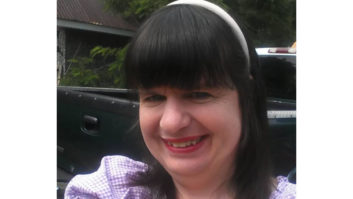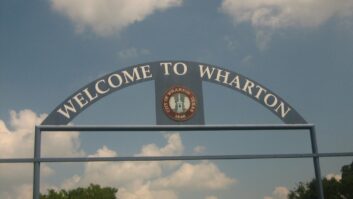There’s a lot of fascinating broadcast history in the FCC’s files. However, knowing where and how to find it can be a bit challenging. Michelle “Michi” Bradley has a mission to change that.

She’s president of REC Networks and REC Broadcast Services LLC, which provide advocacy and professional filing services, mainly to LPFM stations. Bradley’s goal is to compile information kept by the FCC on three generations of record-keeping into a searchable, Web-based system. It’s a huge project, but plugging away every day is beginning to yield results.
“In the beginning, all the records were kept by the FCC on typed 3-by-5 index cards kept in file cabinets,” Bradley said. “These cards maintained a basic history of the station including every application that was placed and their outcome.” When the FCC moved its offices to the Portals in 1999, the index cards were transferred to microfilm and eventually destroyed. The commission has made the data from the “History Cards” accessible to the general public.
The index card system was replaced by the Broadcast Application Processing System in 1978. BAPS in turn was replaced in 1999 by the Consolidated Data Base System. One of the problems facing the REC history project is that when new systems were implemented, not all of the old data was transferred on to them.
“This means that CDBS is a fantastic source for tracing a station’s history back to 1999,” says Bradley, “but data prior to that was incomplete, and history data prior to 1978 was almost nonexistent.”
The REC Radio History Project comprises several initiatives, with a goal of populating REC’s broadcast query tool (fccdata.org) with as much historical engineering information as possible. The ultimate aim is to give the full history of a broadcast facility from the time that it was licensed. This effort has become much easier with the recent availability of scanned data from the FCC’s pre-1980 broadcast History Cards, which have data from as early as 1927, when the commission’s predecessor, the Federal Radio Commission, was created.
HISTORY CARD PRESERVATION
One of Bradley’s initiatives is the History Card Preservation Project.

“This is a very time-consuming part of the project,” Bradley says. “It can take anywhere from a half hour to over three hours per station, based on when it was started. For example, a 1920s-era station may take up to four times as long compared to a 1950s-era station, especially if the station started as a daytime-only operation.”
Data from the FCC History Cards must be entered manually into four different Excel spreadsheets that are then converted to comma delimited files and uploaded into four dedicated tables in the REC database. Bradley is usually able to enter data for about three stations per day. A few of the cards go back to the days when stations were licensed by the Department of Commerce.
These cards are usually where the most interesting historical information turns up, especially if the stations were daytimers or time-shared operations. “Often there were requests to stay on the air beyond licensed hours. The reasons given were things like covering football games, election returns and even one request to broadcast a banquet dinner. Those cards show how radio in the 1930s was truly a local phenomenon.”
Another bit of history that Bradley discovered is that in the earliest days of radio, only two frequencies were used, one for entertainment, the other for news programming. “There are records of one station switching frequencies during the day as the programming changed.”
BAPS FILE RECOVERY

As part of the BAPS File Recovery Project, REC can extract data from public data files that were provided through the FCC’s FTP site from 1985 through 1999. REC’s system then adds this data into the existing CDBS files. The program will first run the youngest database file that is available to fill in the missing engineering records; then if there is an older file, it will use that data to fill in the blanks.
“We’re actively seeking older copies of FCC public data that was downloaded from the Internet. If anyone has such files, especially from the 1980s, please contact REC so we can arrange to have a copy made. This data can help fill in more of the blanks in the FCC data.”
Recently a 1995 file was found that led to the recovery of about 1,100 AM and FM engineering records.
PUBLIC NOTICE COMMENT RECOVERY
The Public Notice Comment Recovery Project is also a part of this effort.
“During the BAPS era, the FCC kept narratives about many engineering-related applications, similar to the notes they made during the History Card era,” said Bradley. “While the engineering specifics were not carried over from BAPS to CDBS, the public notice comments do offer some level of research data.”
The REC Public Notice Recovery Project queried the FCC database during off-peak overnight and weekend hours to slowly obtain these public notice comments. It automatically added them to the database for display on fccdata.org. This part of the project is now complete for radio (except boosters). Plans are under way to add data from television station at a later time.
Bradley began the overall project in March and is working alone in her spare time. It is slow going.
“We would like to find people who have an interest in adopting a particular radio market, and working on the local AM stations. Not only would this help others who wish to research these stations but it is an excellent way to learn about the history of radio in your area.” She adds that it takes about two hours per station to complete the data.
“We’re approaching the 100th anniversary of radio,” she said, referring to the launch of commercial station KDKA in 1920, “and it would be great if all the work could be done by then.”
Tom Vernon is a longtime contributor to Radio World.










